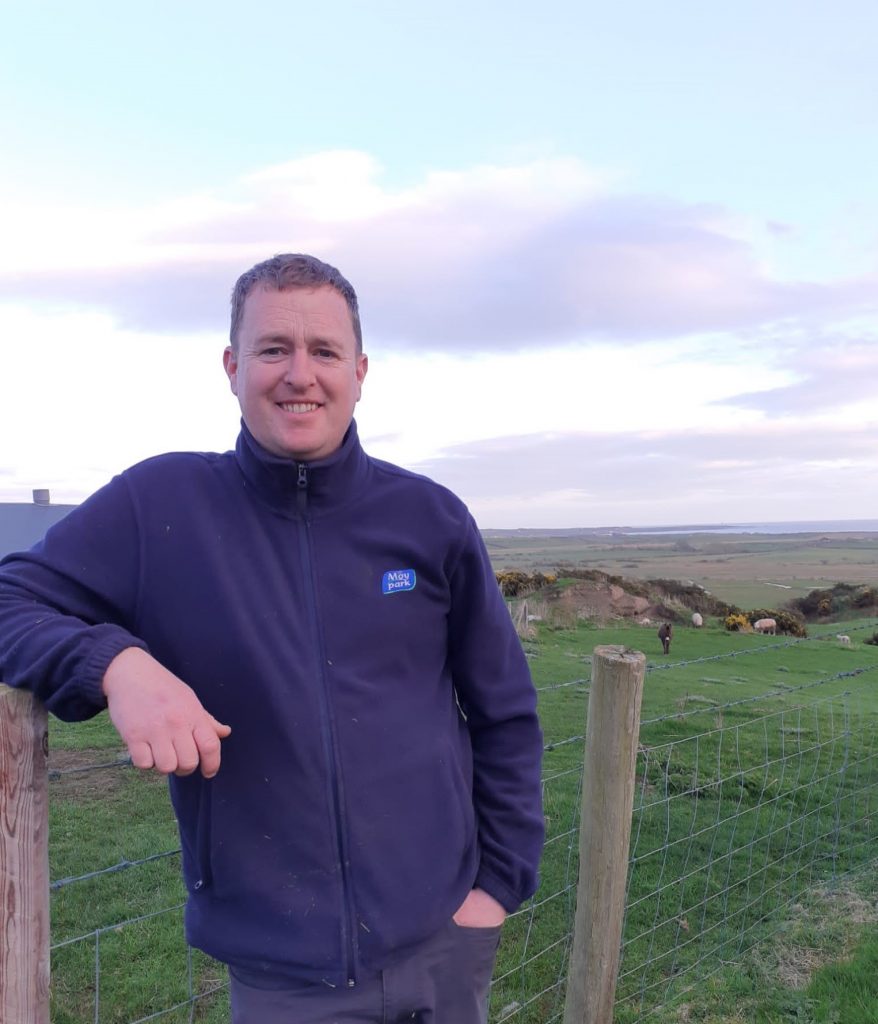Suckler cow switch – Smaller cows proving better on County Down farm
April 21, 2022
Whilst running the Business Development Groups (BDG) in recent years, there has been much debate over what type of cow is best- the bigger continental cow or the smaller traditional type cow. Both have impacts on potential stocking densities, on fodder requirements and feed costs and on cow efficiency. So which is best?

One farmer who has made the switch from the bigger cow to the smaller cow is Gerard Stranney, a suckler cow BDG Member who farms a 40 cow herd on the east coast of County Down.
Despite Gerard producing top quality continental weanling calves and getting top prices for his weanlings at the autumn suckled calf sales, things just weren’t stacking up. This was apparent from the financial and physical benchmarking of his farm business that he completes annually; the benchmarking being an integral part of his membership in his local suckler cow BDG.
Forage/ fodder costs were high, as the bigger cows were eating more. Meal fed per cow unit was high, both from giving the cow herself meal and supplementary meal feeding the calf as the cows milking ability wasn’t driving heavy enough weaning weights alone. Veterinary costs too were high, mainly due to the interventions to problem cows taking longer to go back into calf and due to some assisted calvings.
Gerard commented that in his situation “the big continental cow just didn’t suit me, mainly because she was harder to get back into calf. She also didn’t have quite enough milk to rear the calf well and she was eating more fodder”. Gerard had weighed his cows, they were weighing in at 850kg.
Gerard decided to make the switch in 2017 when only nine cows in a batch of twenty eight turned out in calf at scanning. The bull was fertility checked and results came back fine.
As a result the remaining barren cows were to be culled. Gerard did say that, “Although the cull cows went into good money and I was able to replace them with a springing heifer at note without being out of pocket.” It was time to try something different.
He decided to source a traditional type animal, Hereford and Aberdeen Angus x Friesian to inject some milk into the cows with the intension of driving heavier weaning weights without a reliance on meal creep feeding. These animals were purchased from the one farmer to minimize disease entry. The average liveweight of the cows is now 650kg, so potentially for every ten 850kg cows, he could now keep thirteen of the smaller 650kg cows.
Back in 2016 Gerard’s herd had a calving index of 481 days, with calvings over seven months between March and November. His 2nd calvers had a calving index of 711 days and heifers were calving down at 32 months.
Now, since making the switch his herd calving index is 354 days with the calving period condensed into three months from February to April. Heifers are now calving down at 24 months and his 2nd calvers currently are achieving a calving index of 356 days.
Gerard now has a focus on cow efficiency aiming for each cow to rear to 200 days a calf per year that is 50% her average weight.
In summary Gerard stated the benefits he has encountered are
- “Cow fertility has improved dramatically, calving index has reduced by 127 days from 481 to 354 days over five years
- From my experience the cows calve easily and go back into calve quicker too; therefore more live calves are on the ground with decreasing veterinary costs
- I can now keep more cows, thirteen of the smaller type cows instead of ten of the bigger cows, resulting in more total output
- Feed costs per cow have reduced and
- The grazing season is extended – I can get these cows out to grass earlier and keep them out longer at the backend as they cause less poaching”.
For Gerard smaller cows are proving to be the better option. He commented “with some forward thinking, I feel I am positioning myself in good stead for the future and creating a sustainable suckler cow enterprise”.
The Business Development Groups scheme is operated by the College of Agriculture, Food and Rural Enterprise (CAFRE) and is part-funded by the EU through the NI Rural Development Programme 2014-2020.
